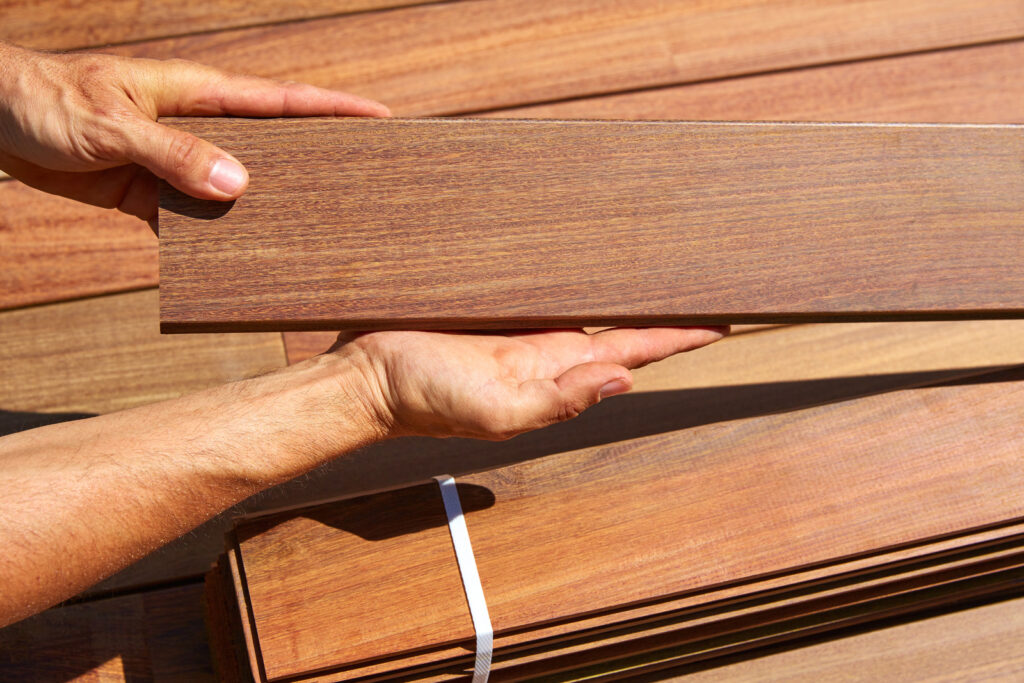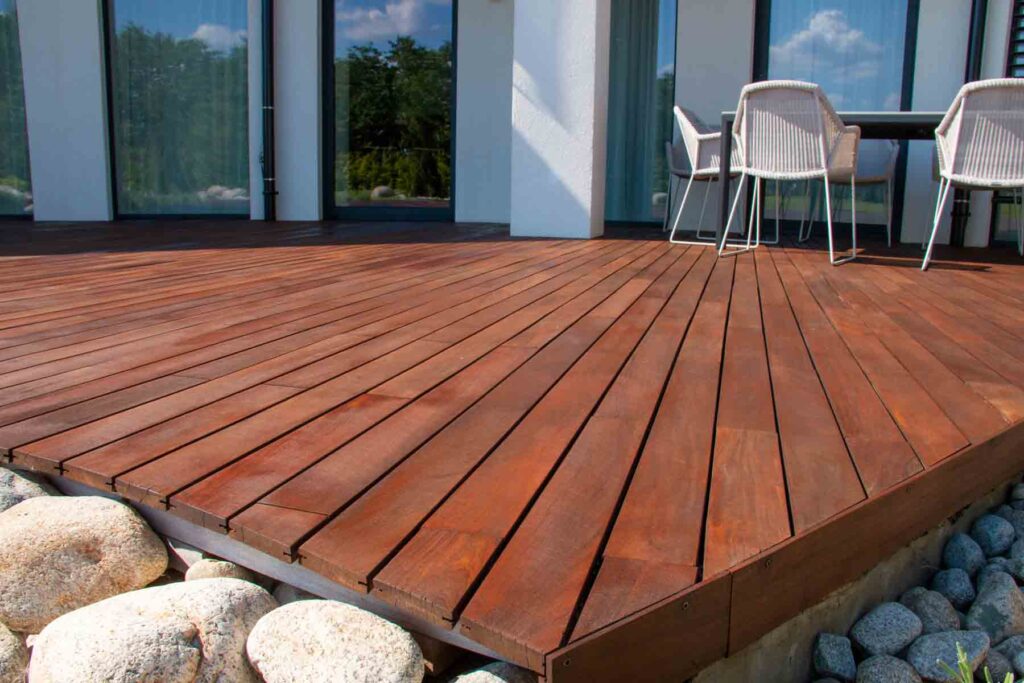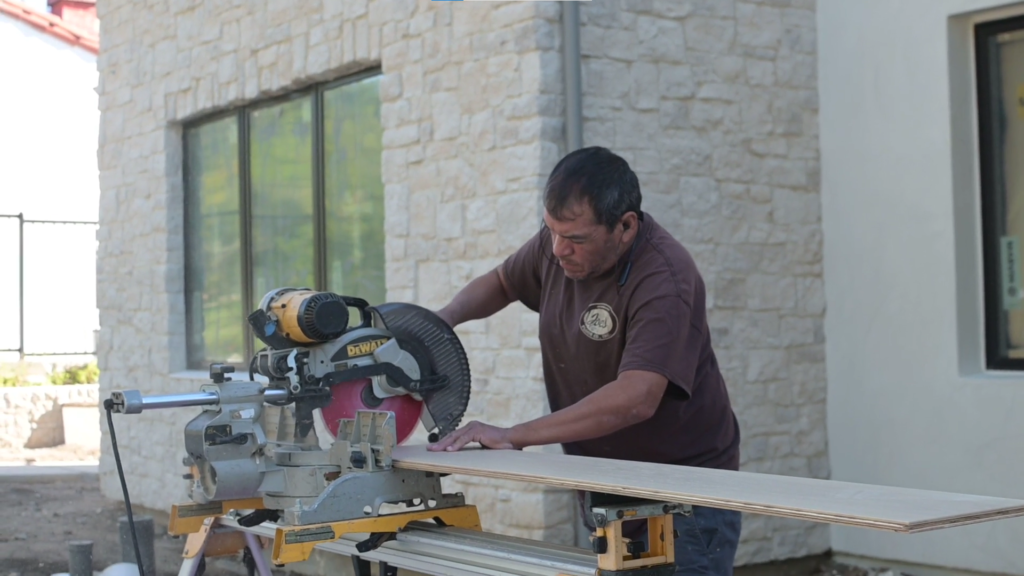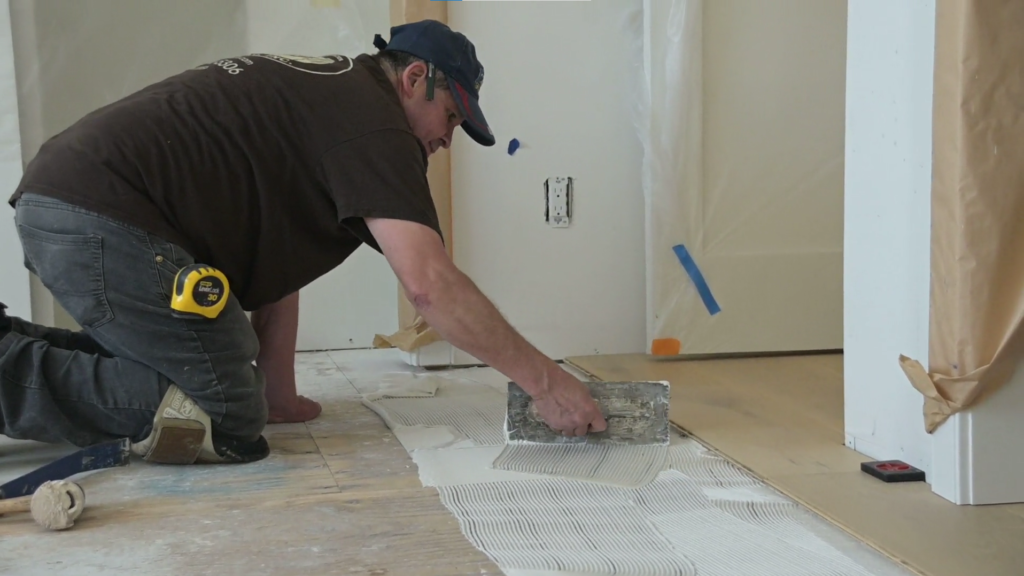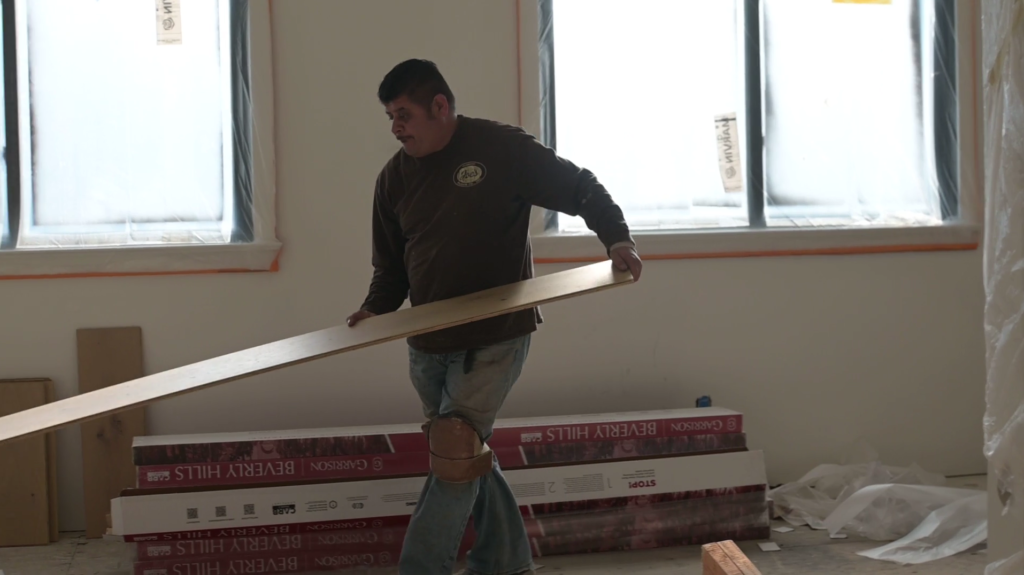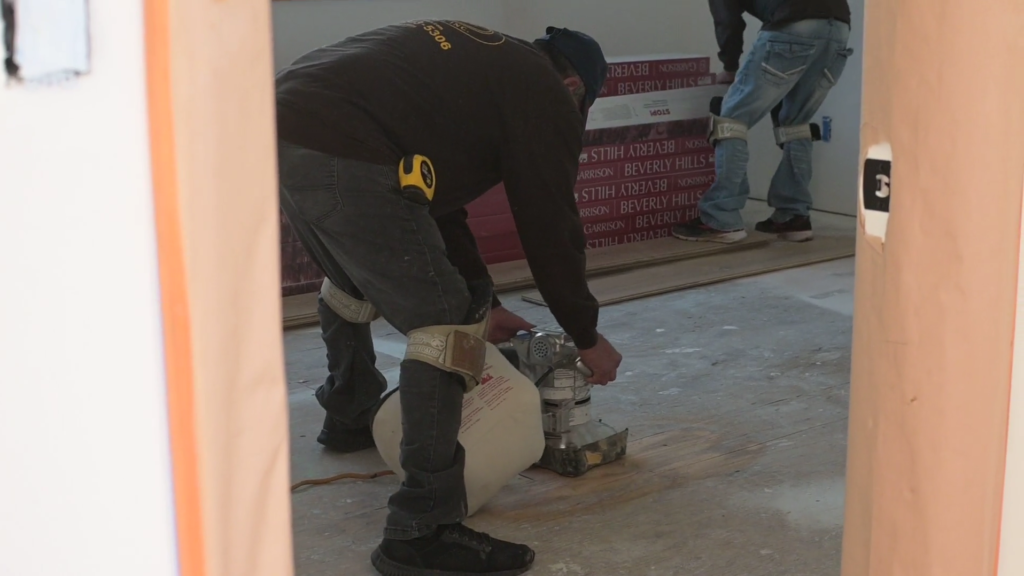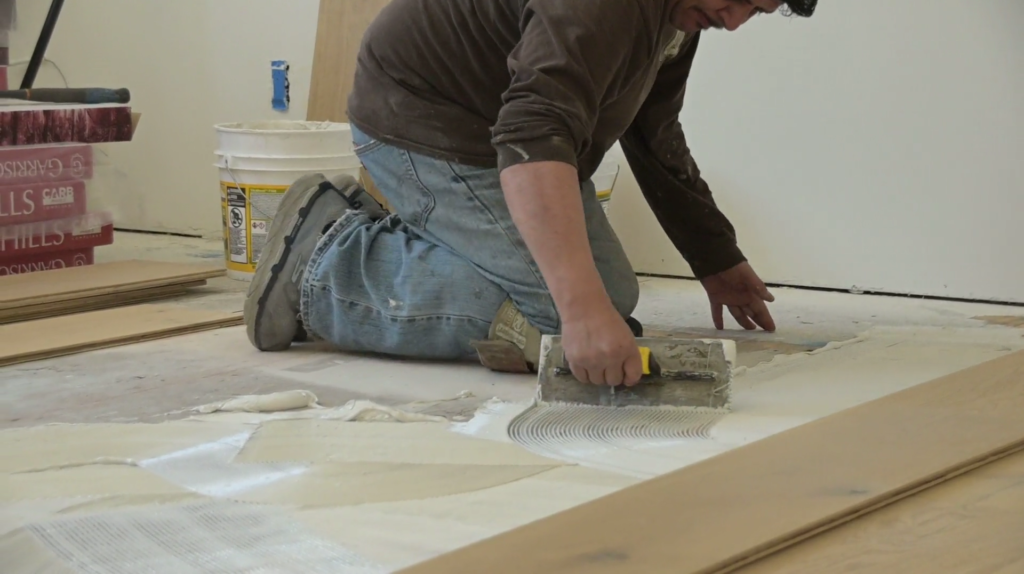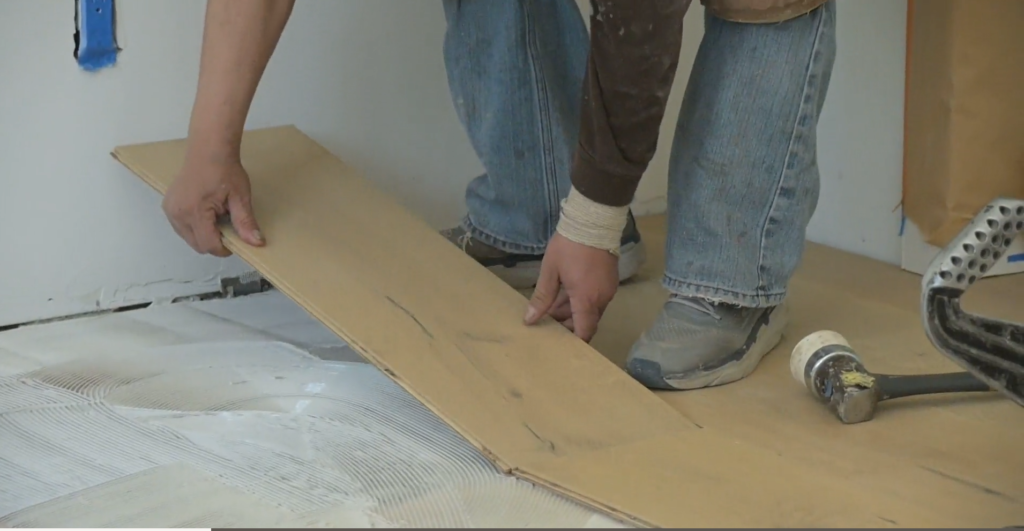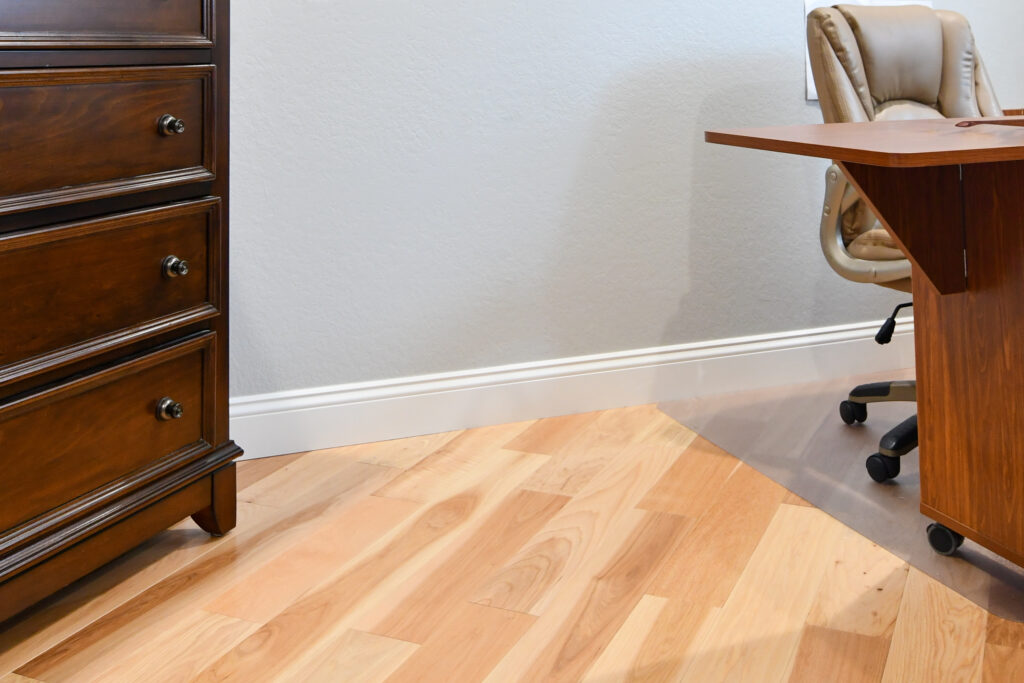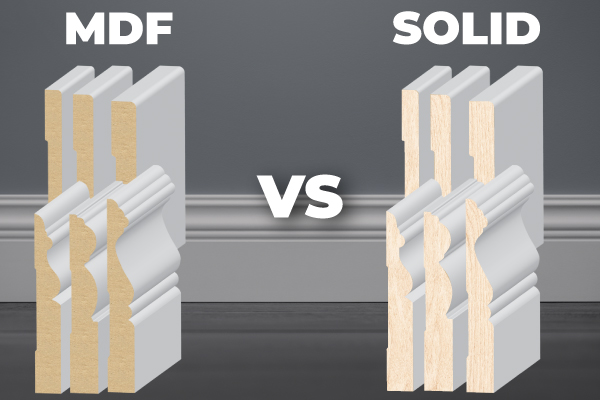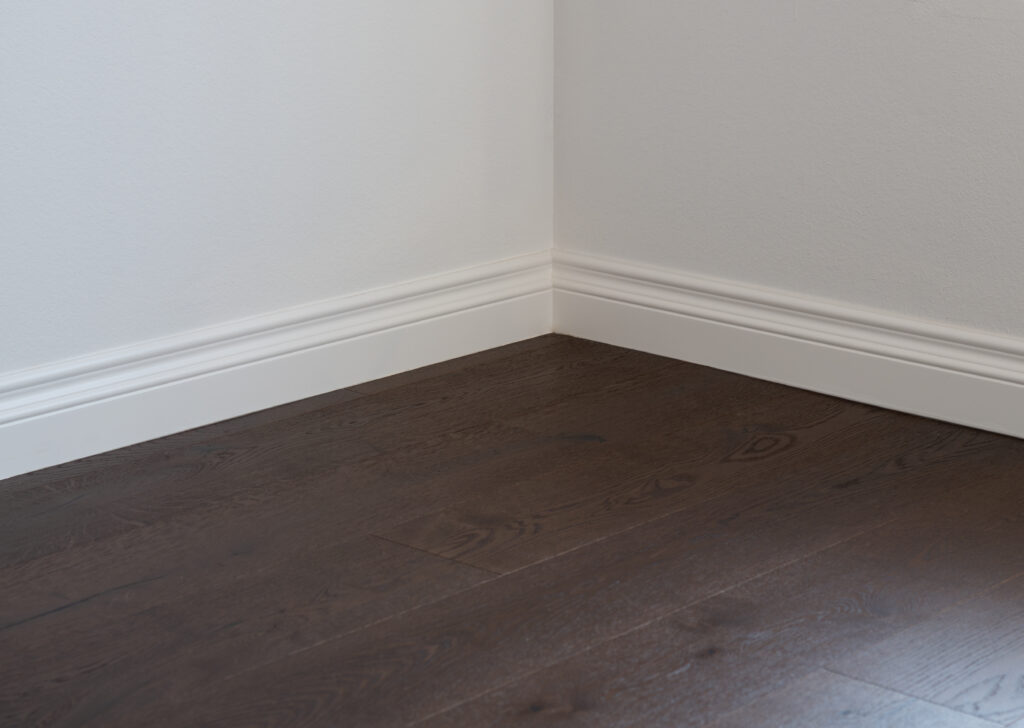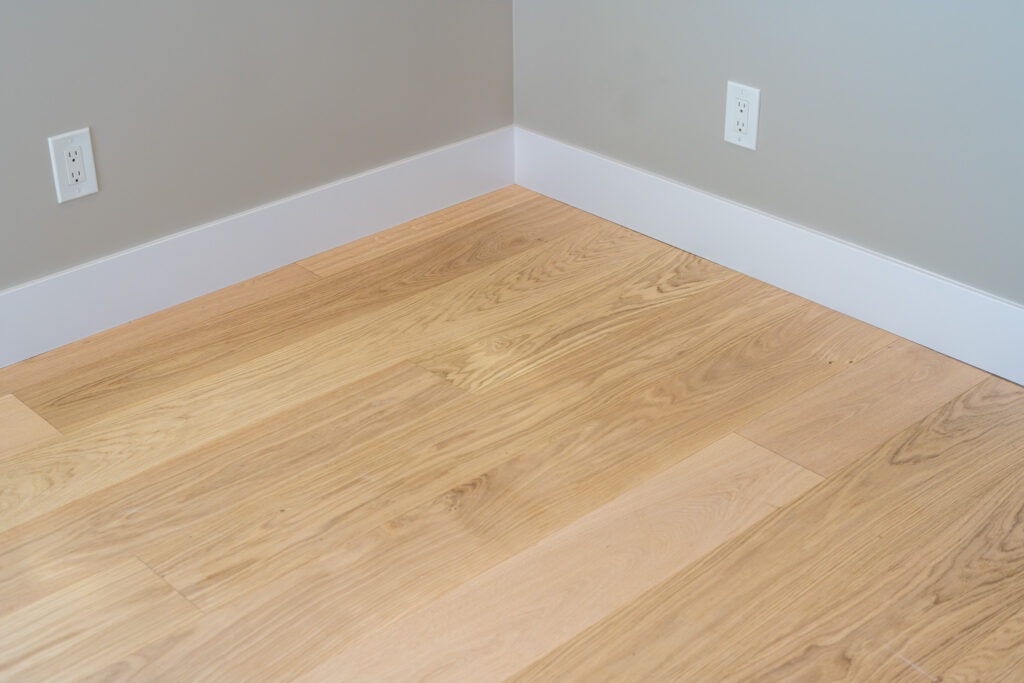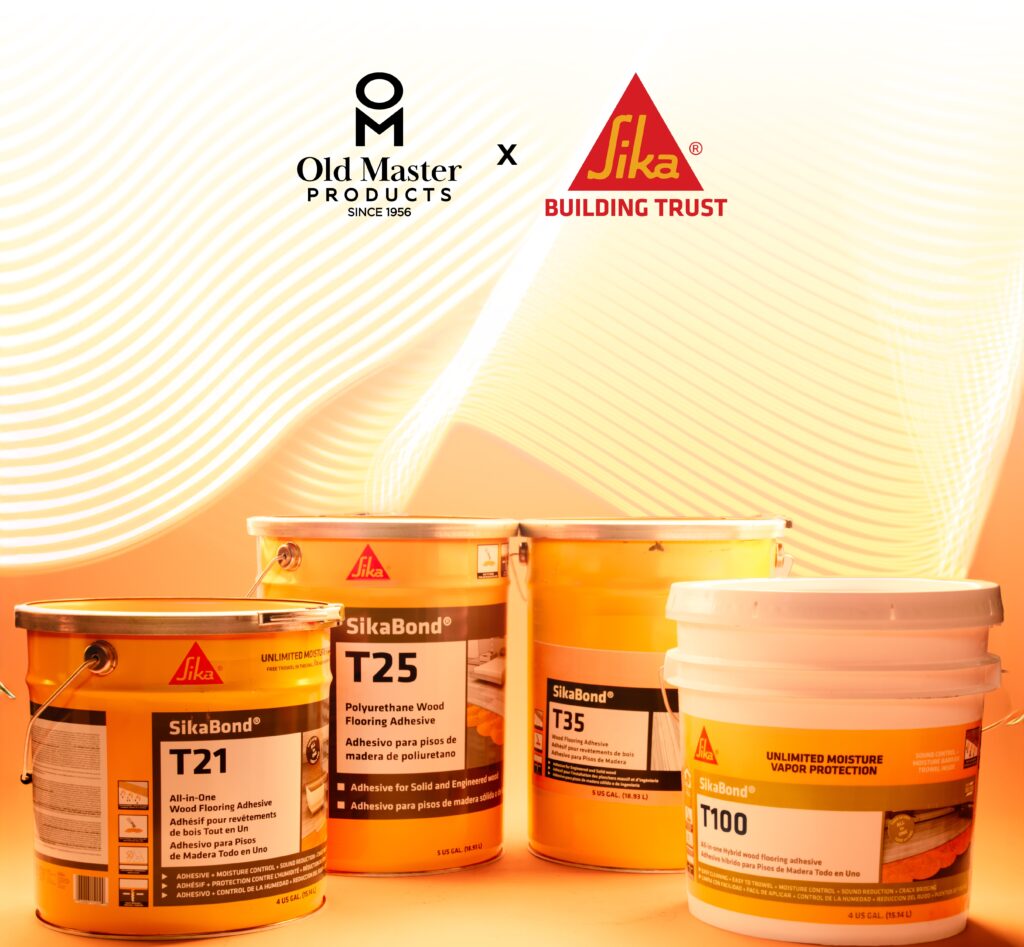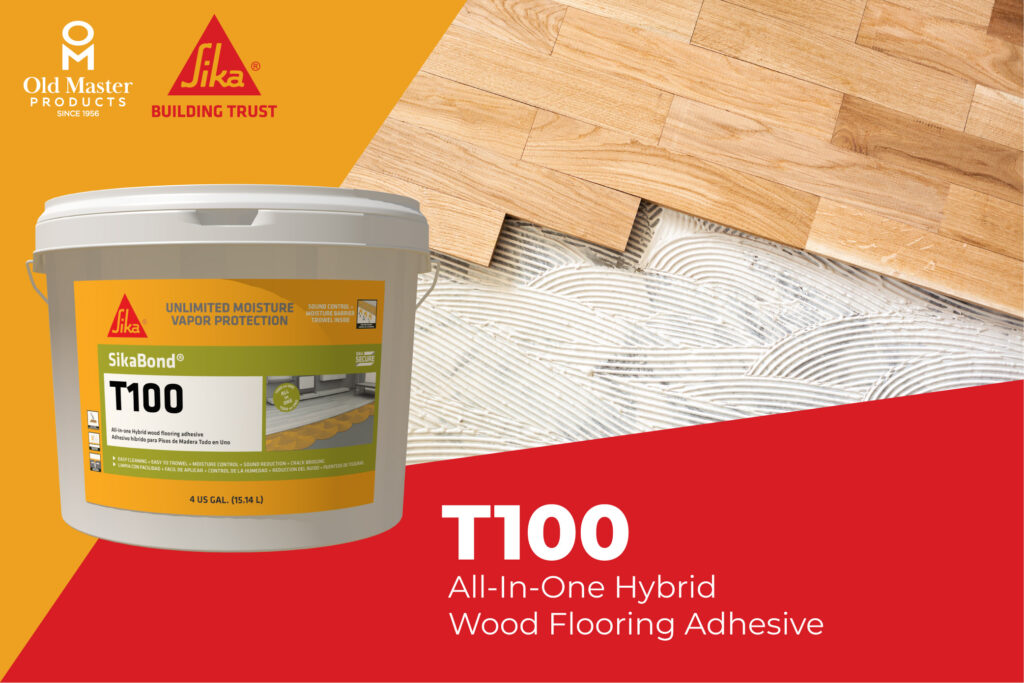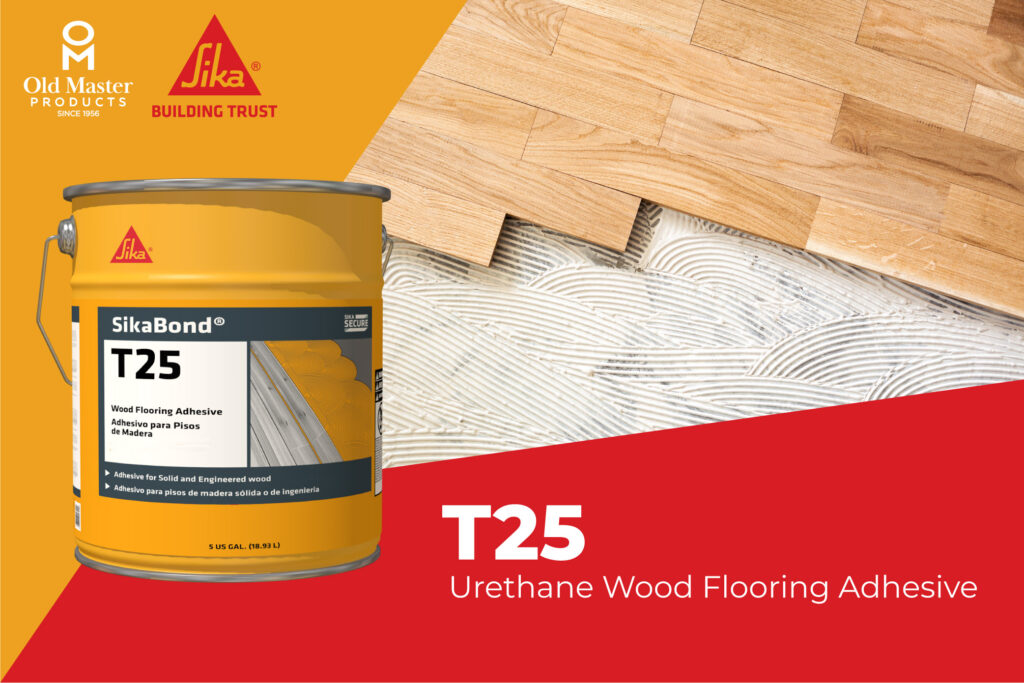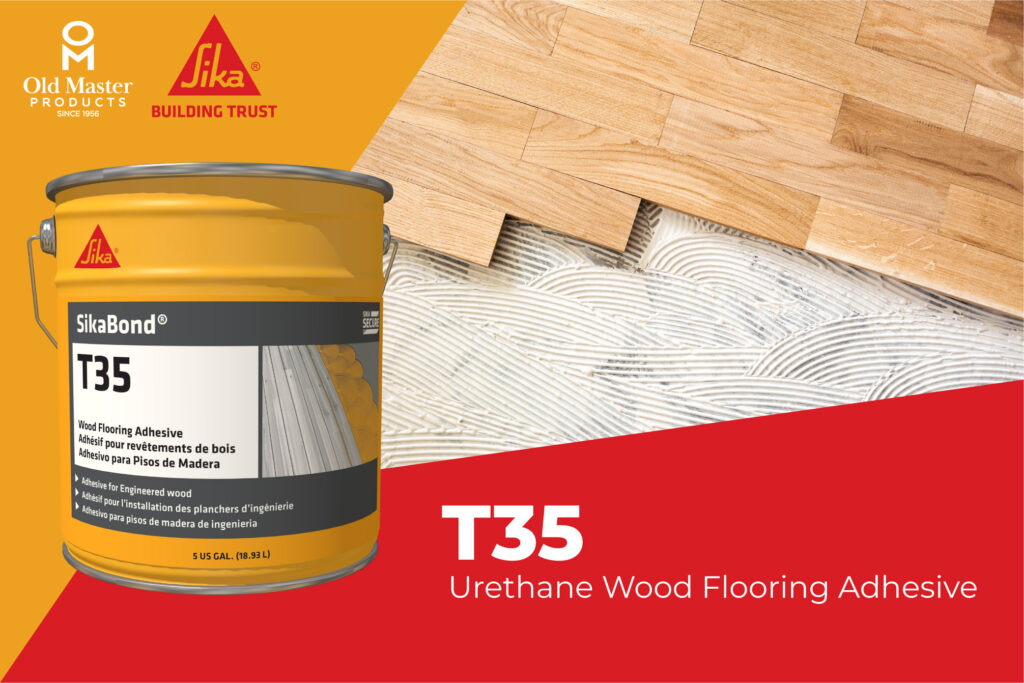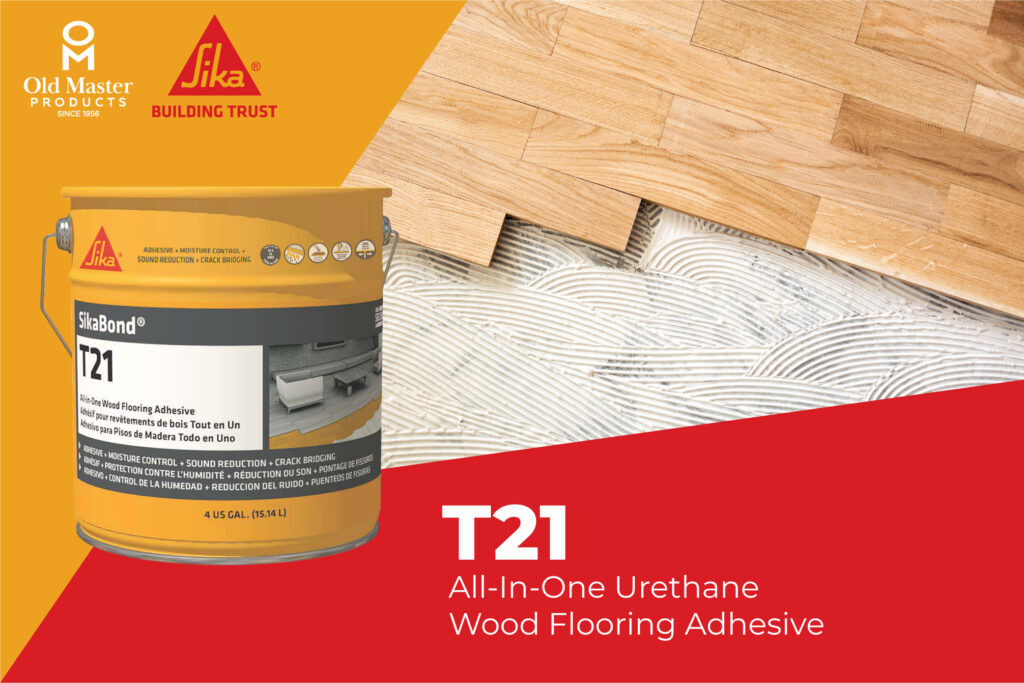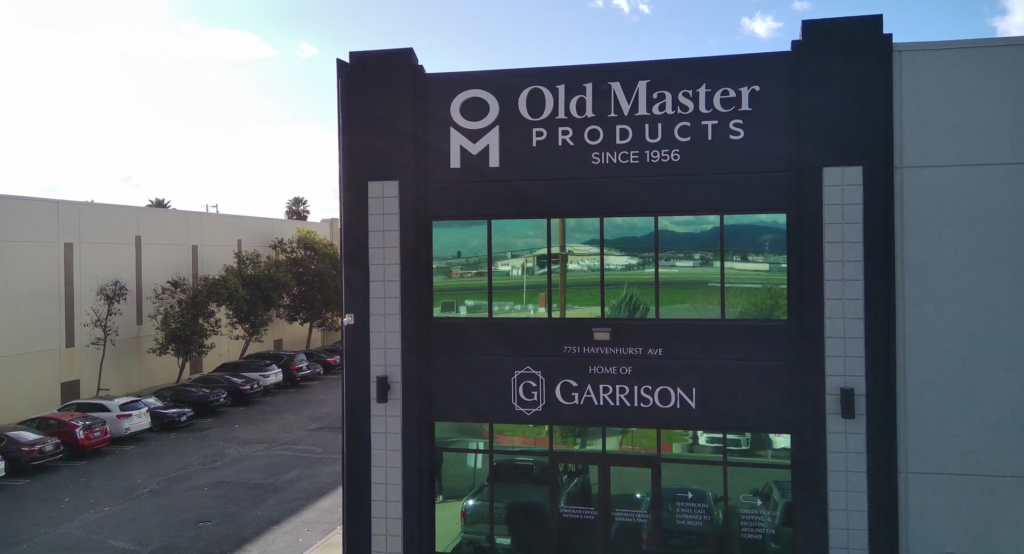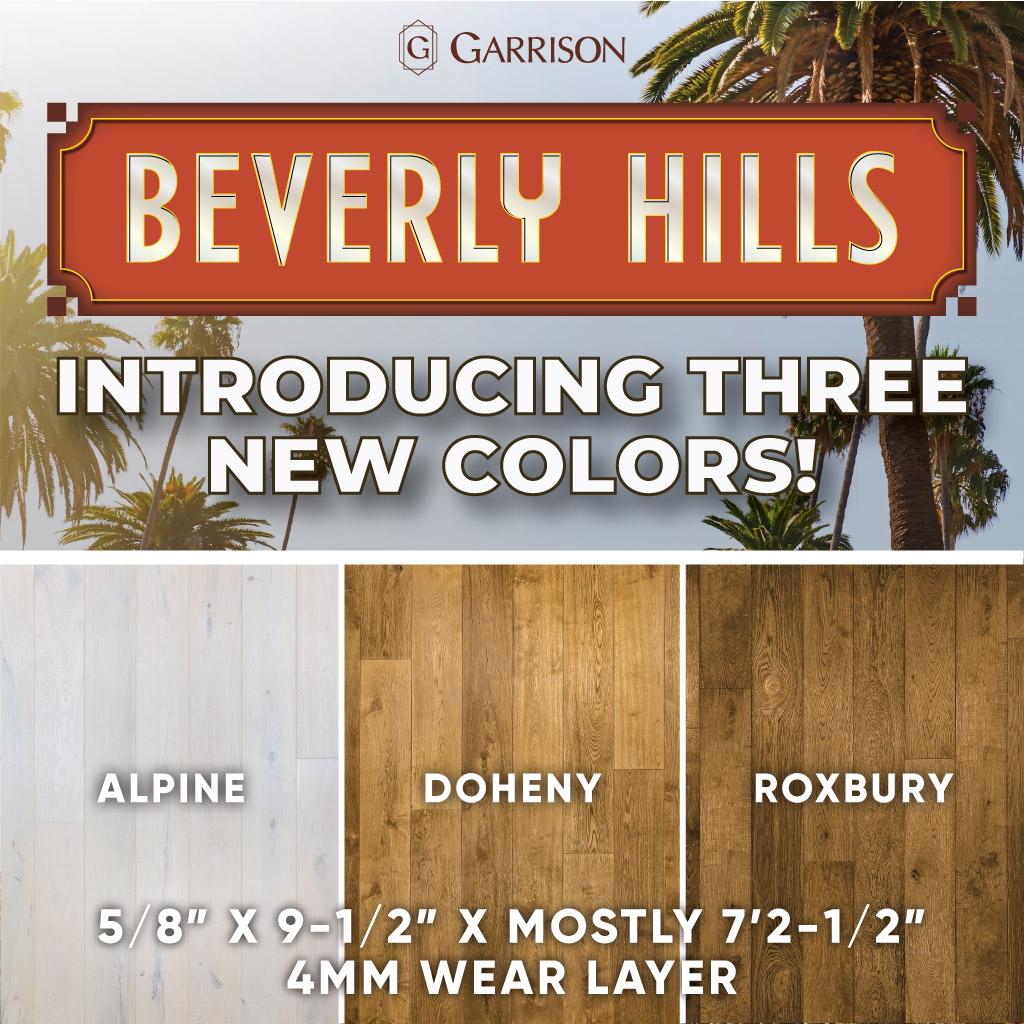
Our most popular collection just got even better!
As a flooring contractor, you know that homeowners and designers are always on the lookout for hardwood flooring that combines aesthetics, durability, and value. The Beverly Hills Collection by Garrison is a top choice that ticks all these boxes, and now it’s even better with three new shades: Alpine, Doheny, and Roxbury. Here’s why you should consider recommending this collection to your clients:
Why the Beverly Hills Collection Stands Out
- Wide Planks for a Luxurious Look:
- 9-1/2 Inch Wide Planks: These wider planks create a more cohesive and spacious look, enhancing the elegance of any room. The generous width allows the natural grain and texture of the wood to shine, making a bold statement in any interior setting.
- Durability You Can Rely On:
- Tough, Protective Finish: Each plank is finished with Urethane combined with Aluminum Oxide, providing a protective layer that stands up to daily wear and tear. The 4 mm thick wear layer ensures longevity, even in high-traffic areas.
- Variety of Rich, Modern Colors:
- Diverse Palette: The Beverly Hills Collection offers a stunning range of modern colors, from lighter shades to deep, rich hues. Each finish is meticulously applied to enhance the natural beauty of the wood, providing a luxurious appearance.
- Long Plank Lengths for Seamless Elegance:
- Lengths Beyond 7 Feet: Longer planks reduce the number of visible seams, creating a smooth and continuous flow that enhances the overall aesthetic of your space. This feature not only adds to the visual appeal but also makes rooms appear larger and more open.
Exciting New Additions to the Collection
1. Alpine:
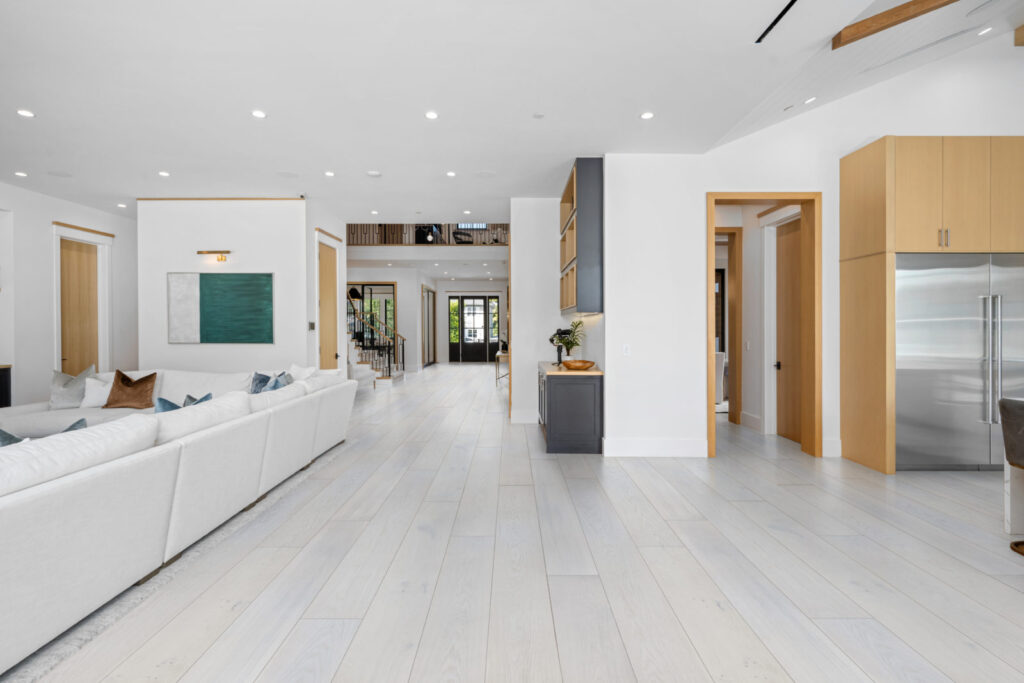
- Light and Airy: Alpine is a light/white colored flooring option that brings a sense of modern sophistication and brightness to any room. Its hue reflects natural light, making spaces feel more expansive.
2. Doheny:
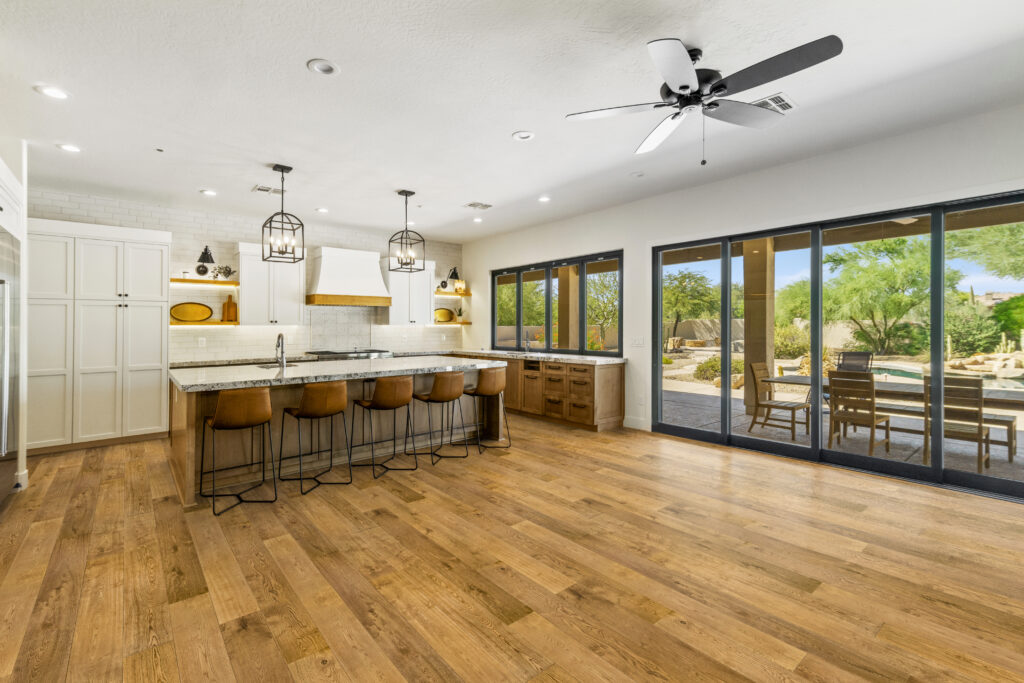
- Versatile Light Brown: Doheny offers a light brown color that blends effortlessly with various decor styles. It’s warm and inviting, providing a versatile foundation for both modern and traditional interiors.
3. Roxbury:
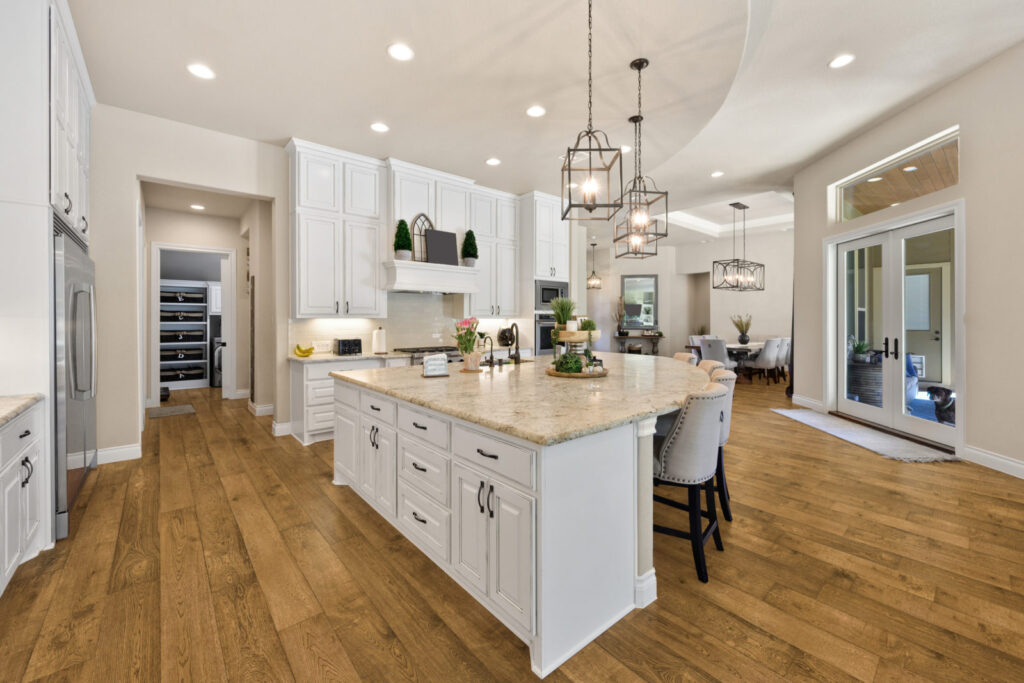
- Rich and Rustic: Roxbury features a medium brown color with rustic charm. Its rich, earthy tones create a cozy and inviting atmosphere, perfect for homes aiming for a warm, rustic feel.
Why Choose the Beverly Hills Collection
- Affordable Luxury: Offer your clients the luxurious look and feel of high-end hardwood flooring without the high price tag.
- Exceptional Value: Wide planks, durable finishes, and a variety of stunning colors provide incredible value.
- Versatile Options: Whether renovating a single room or an entire home, the Beverly Hills Collection promises to deliver style and substance.
Elevate your clients’ spaces with the Beverly Hills Collection by Garrison. The addition of Alpine, Doheny, and Roxbury makes it an even more attractive choice. Recommend the best-selling Beverly Hills Collection and see why so many homeowners and designers have made it their top choice. Experience the timeless beauty and unmatched quality of Garrison hardwood flooring today.
Visit garrisoncollection.com to learn more or contact us
